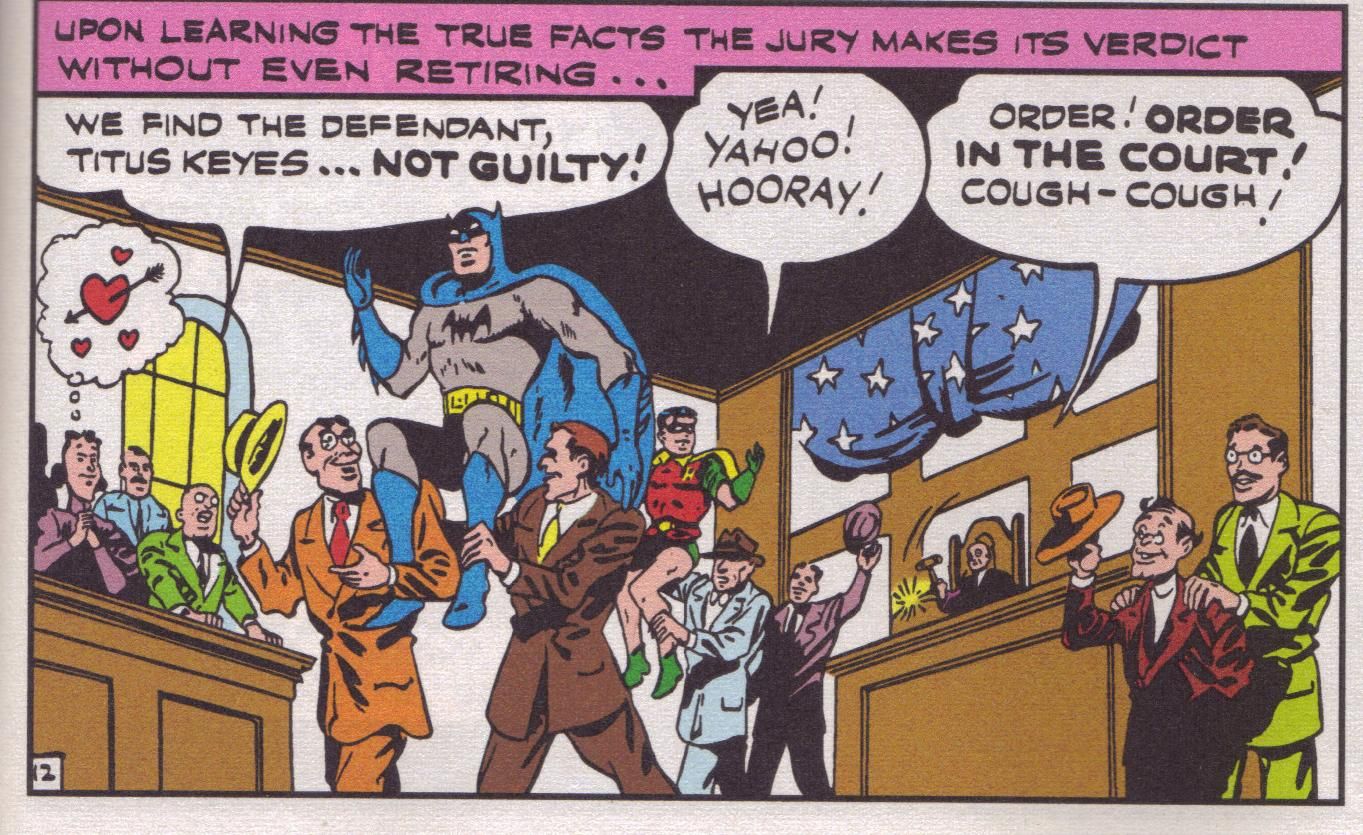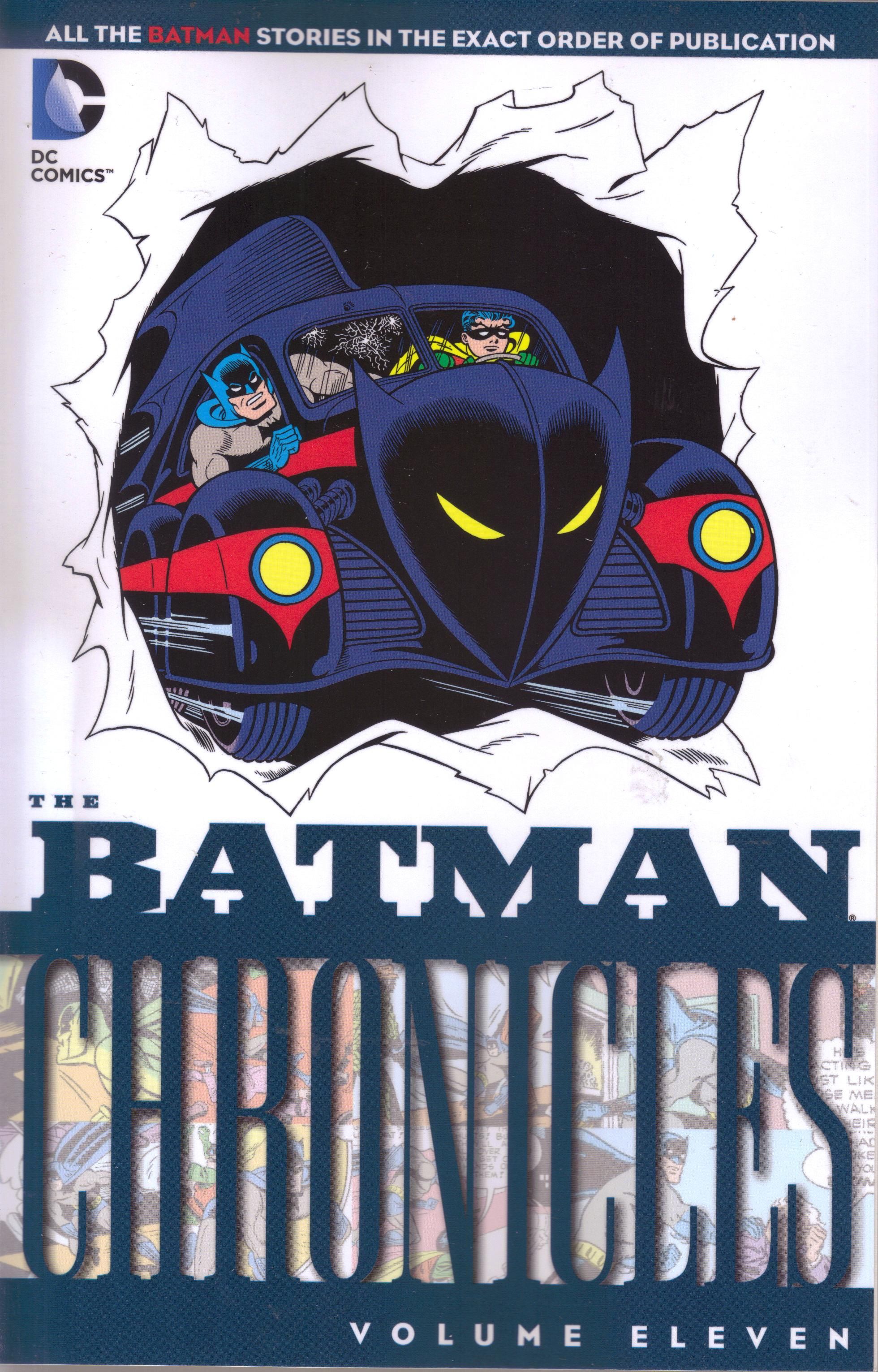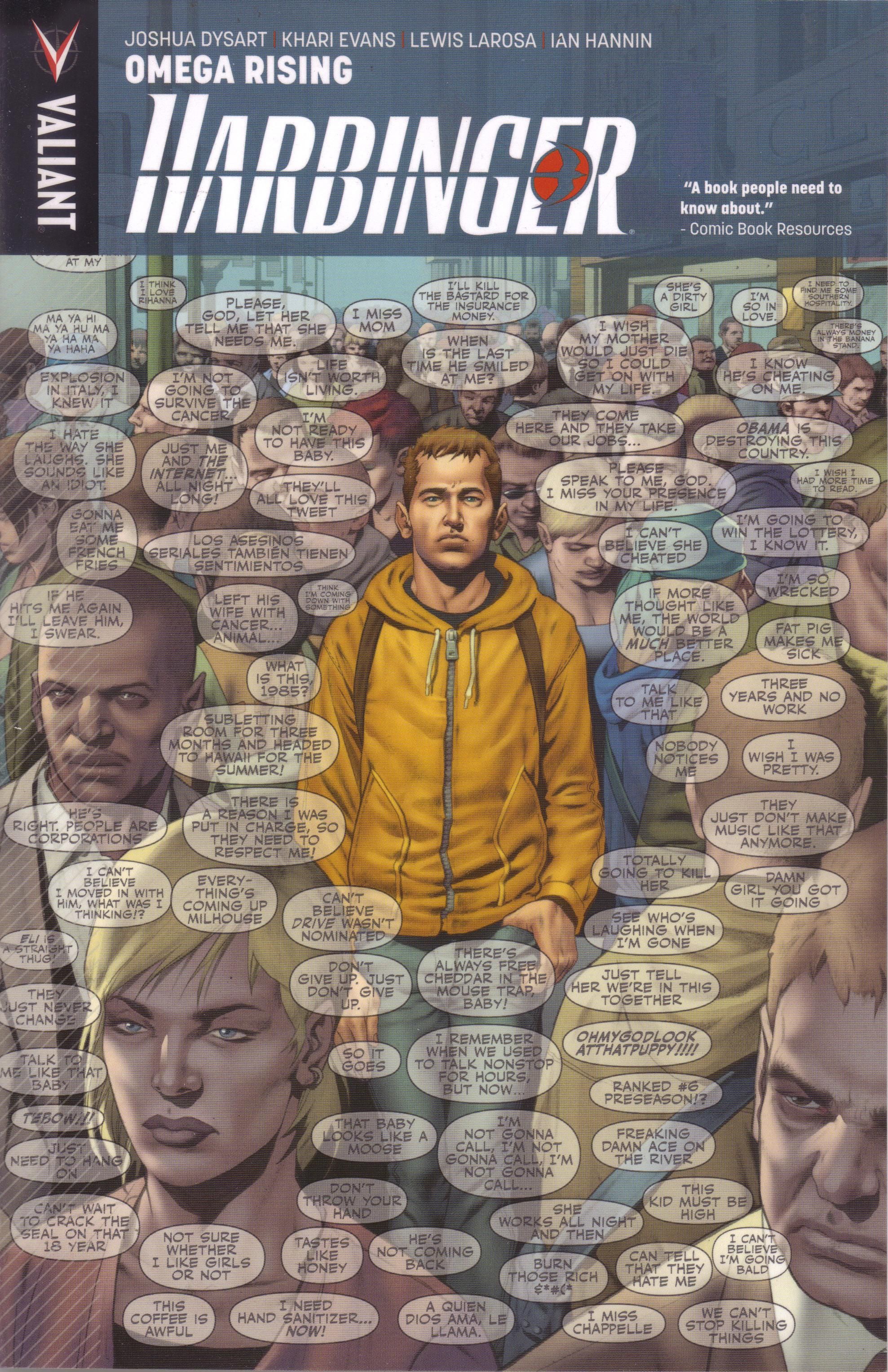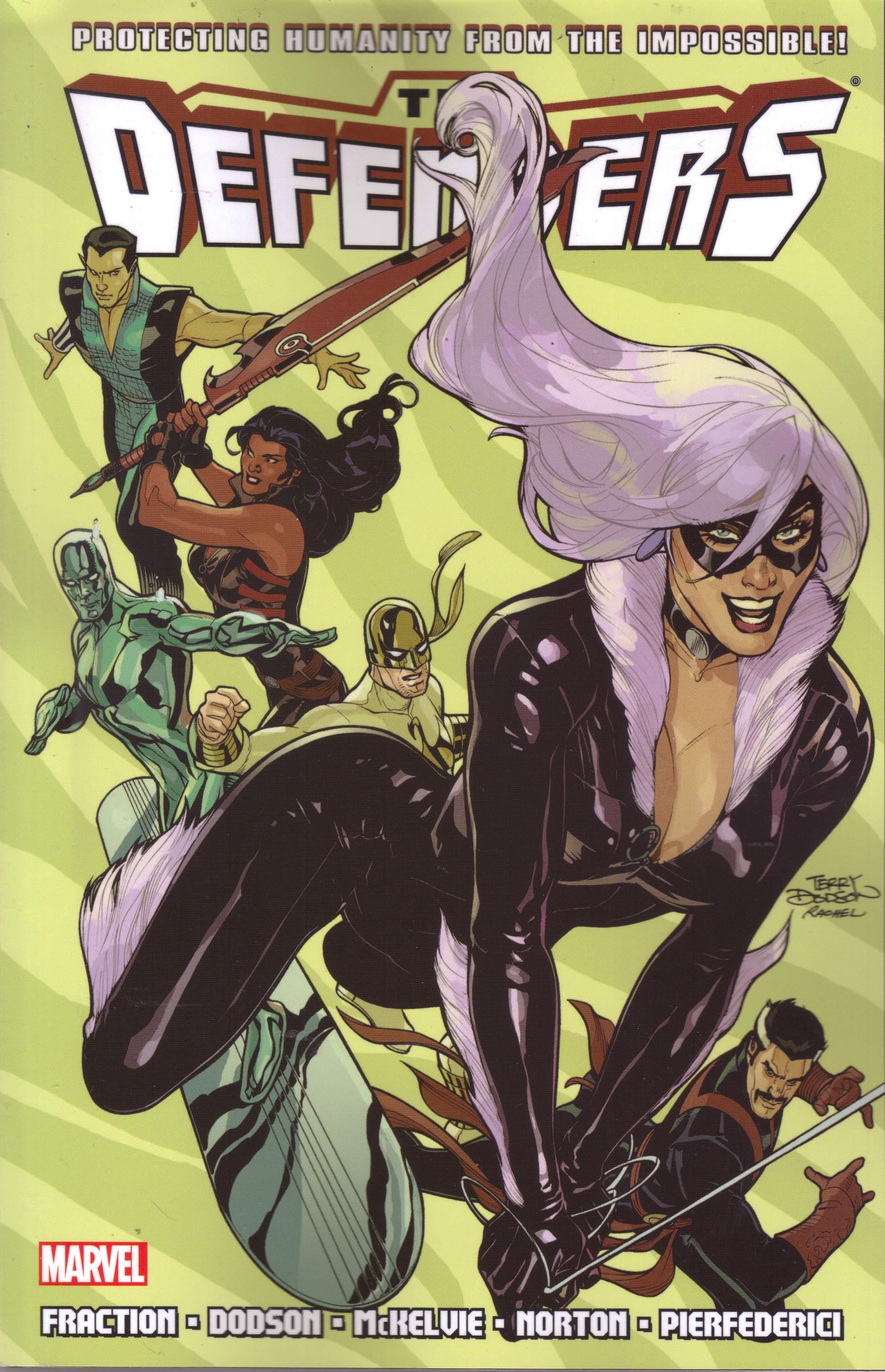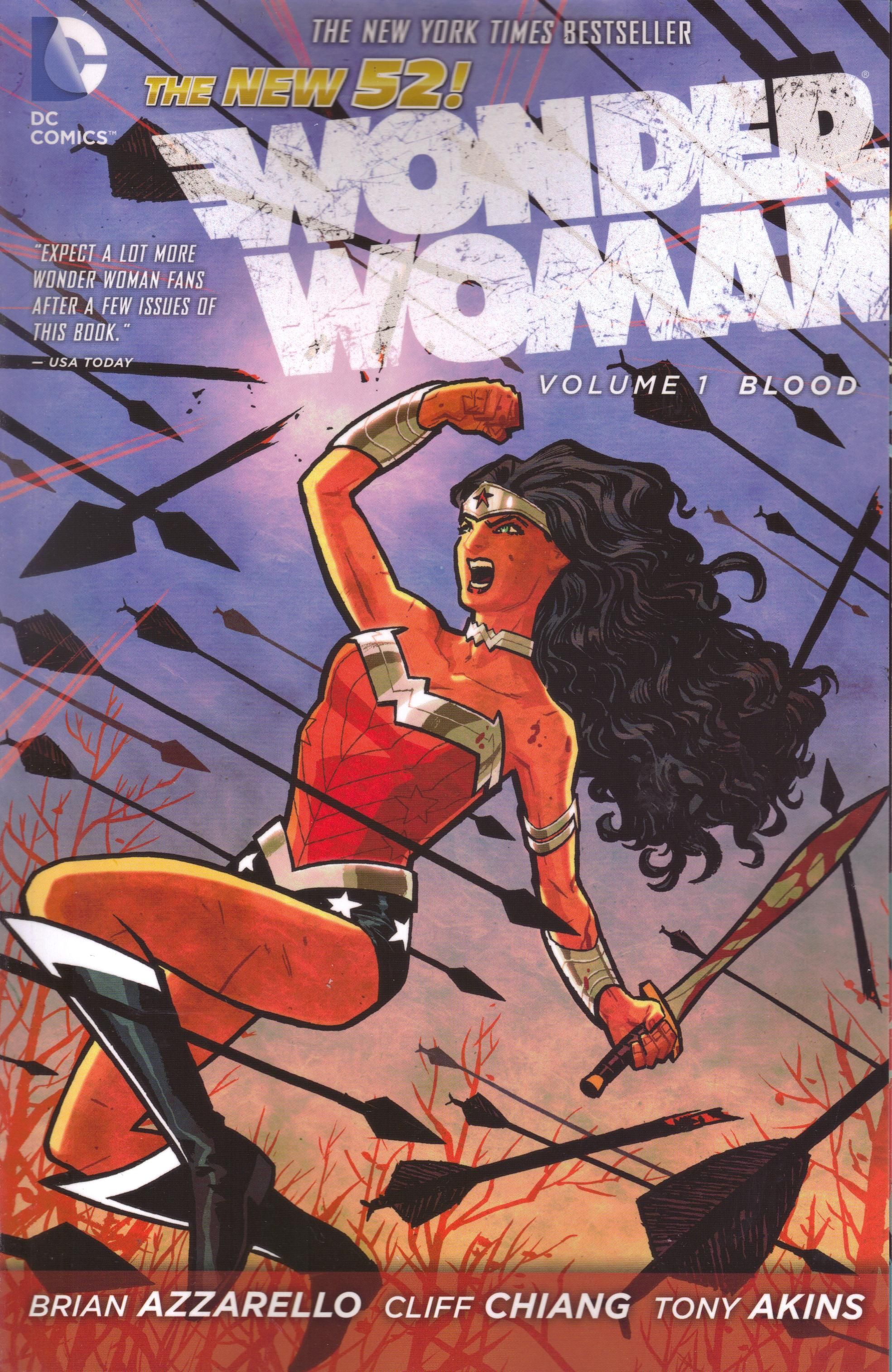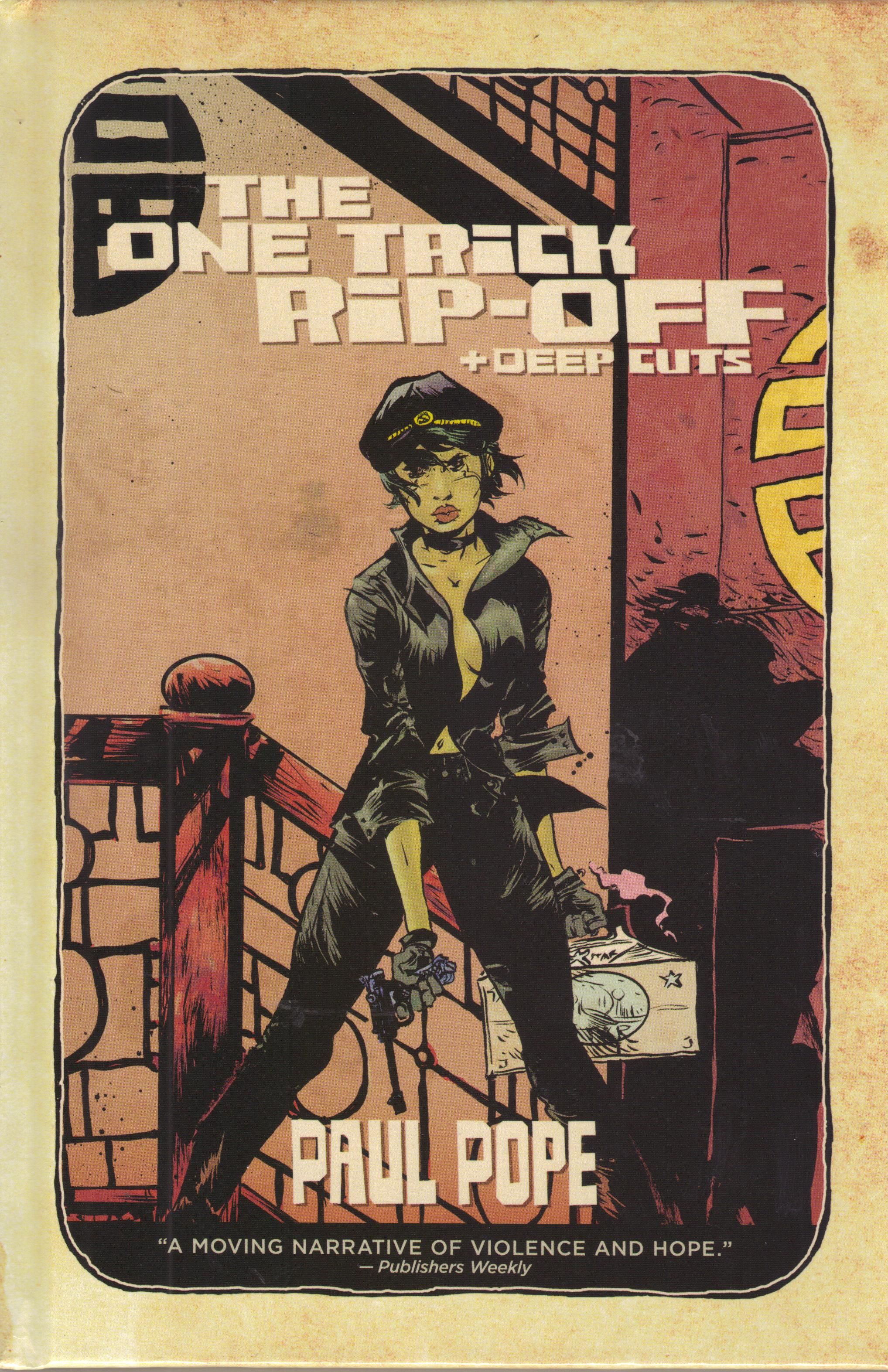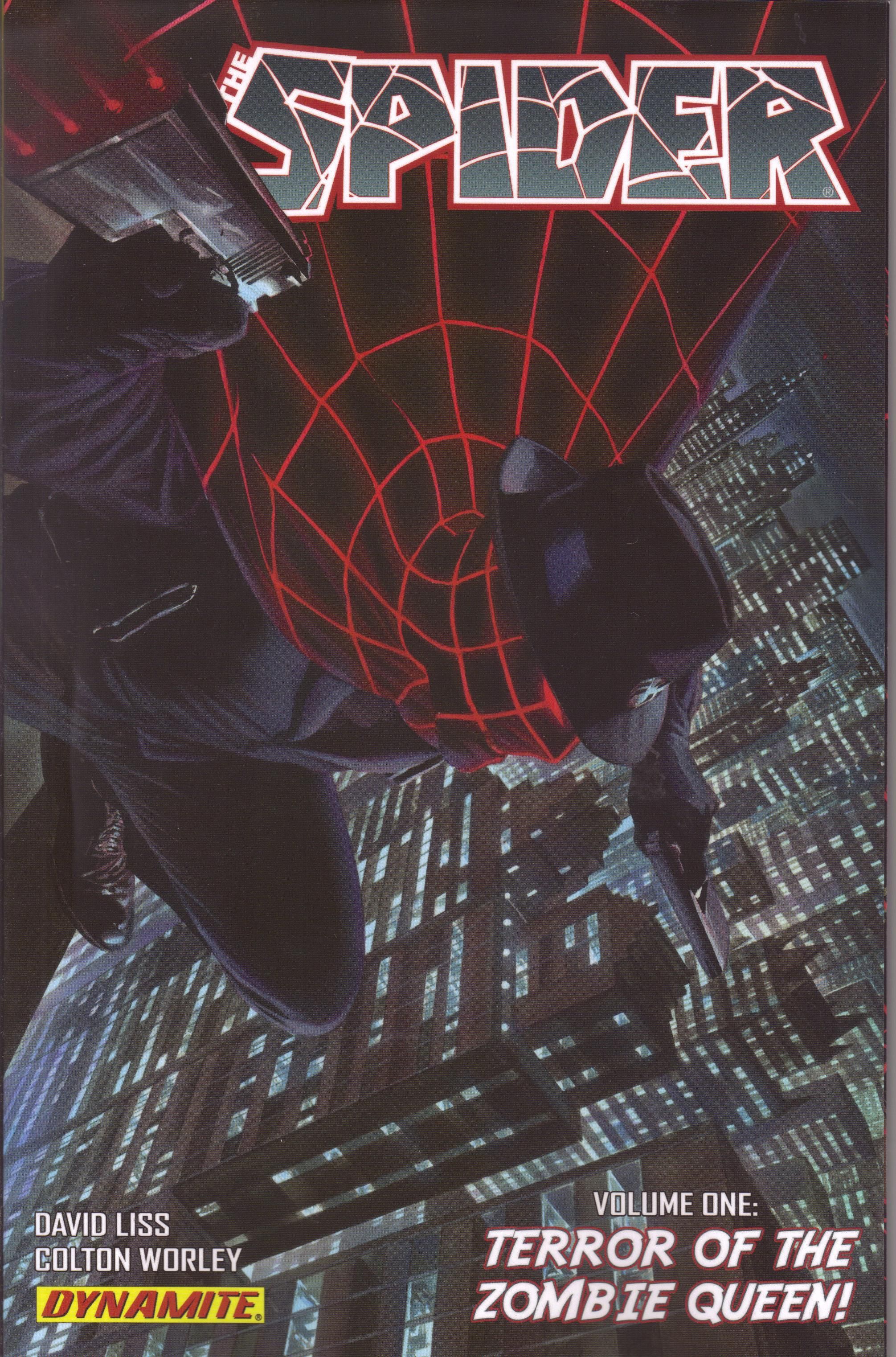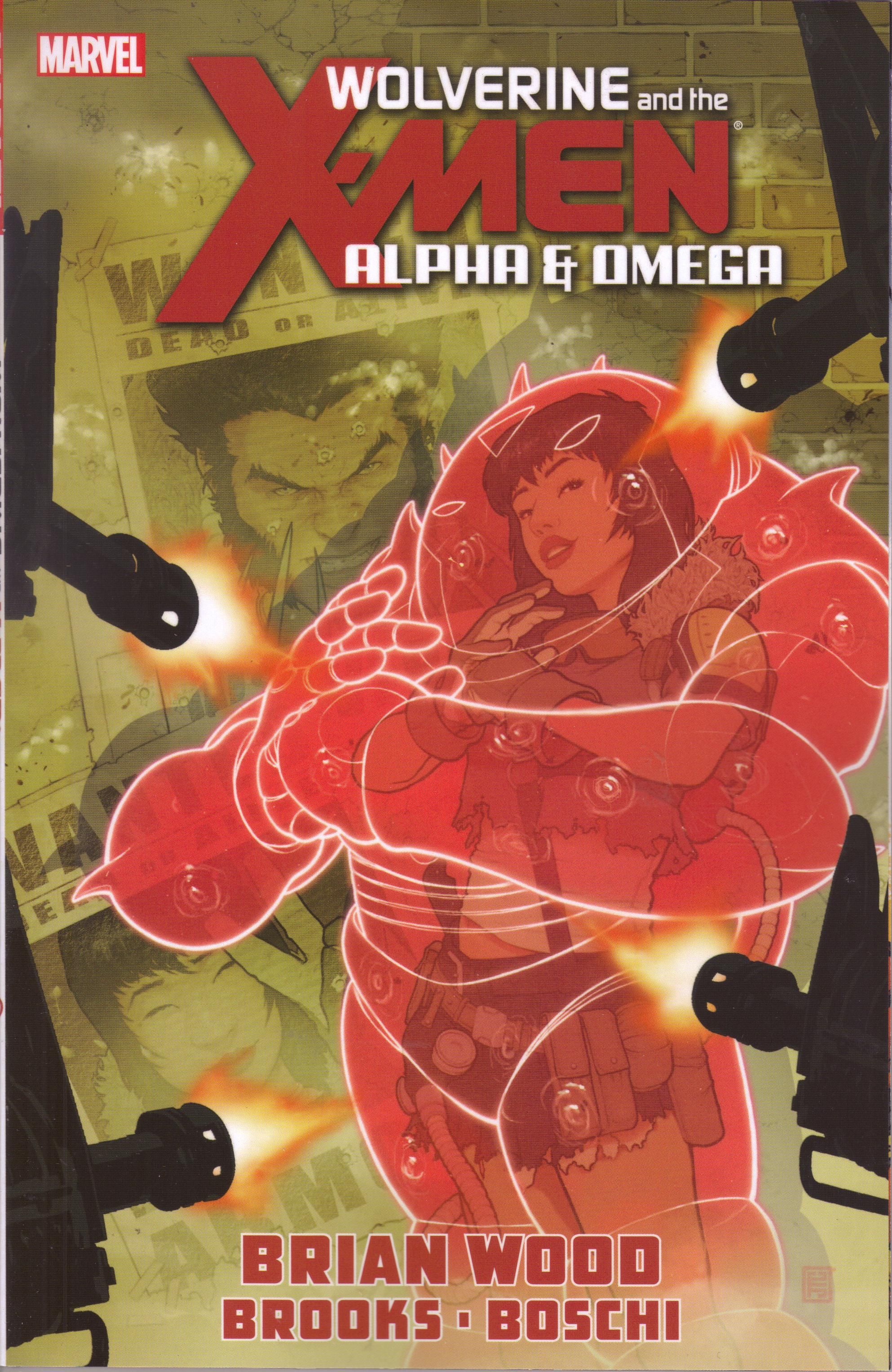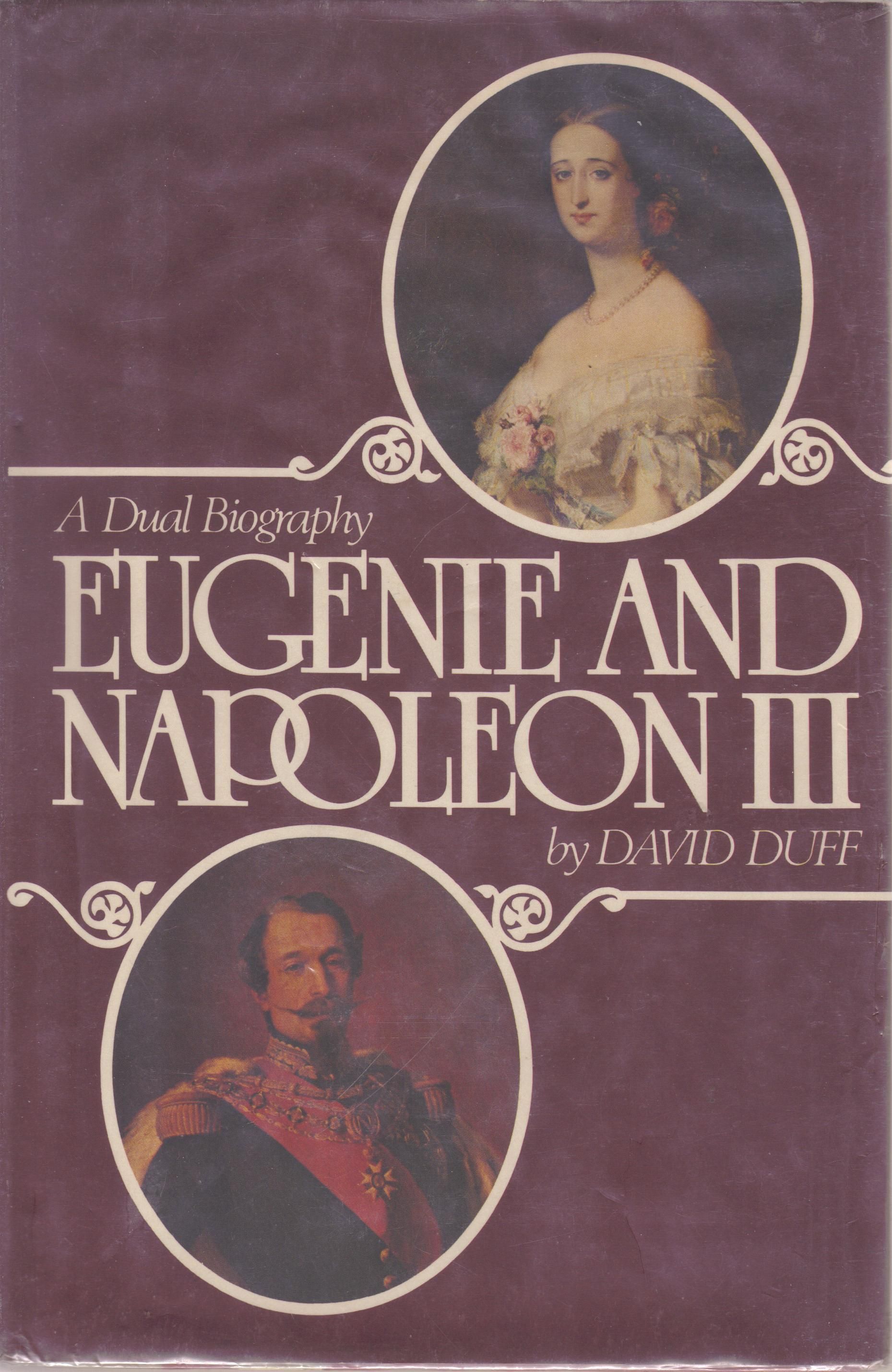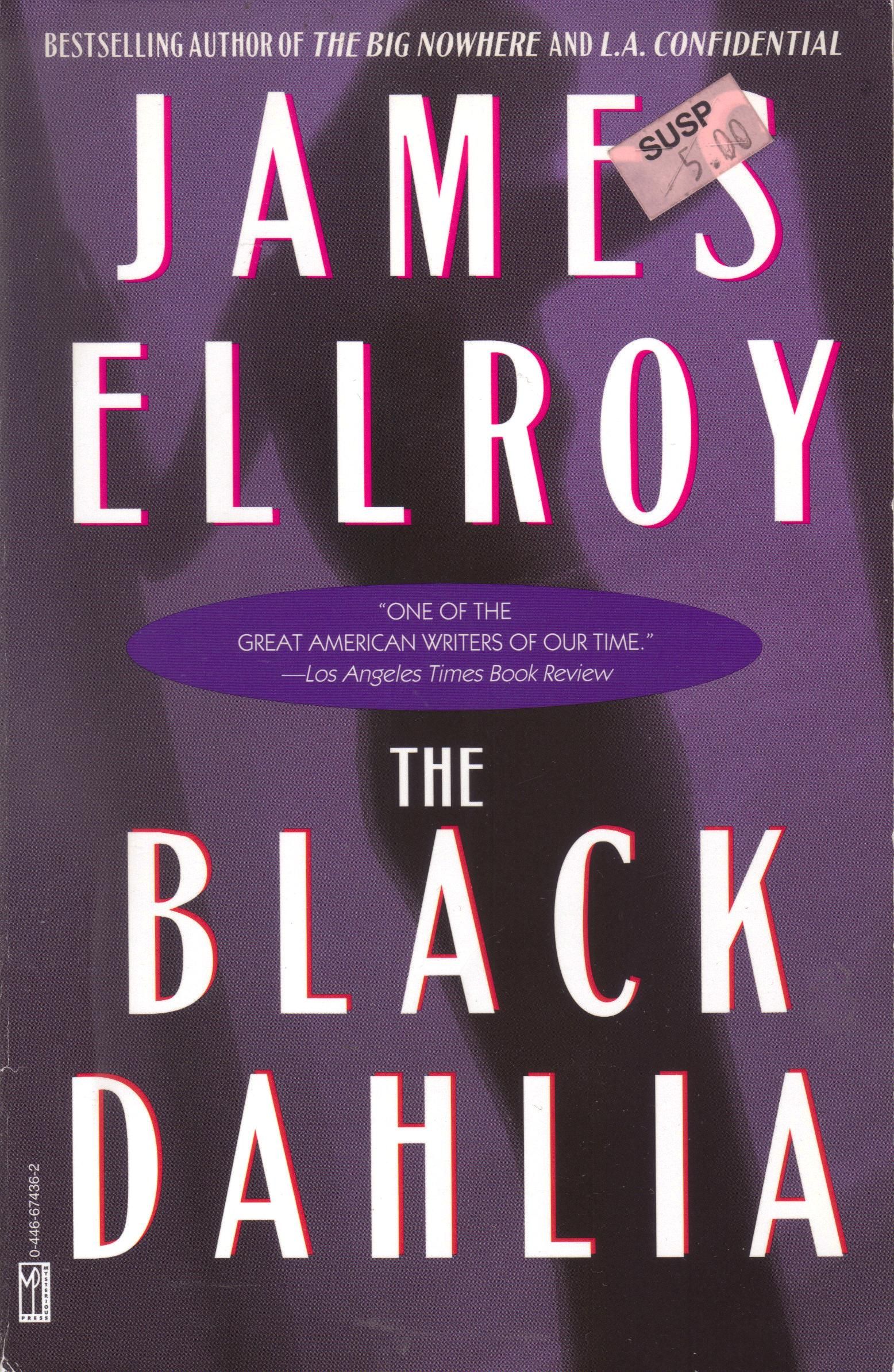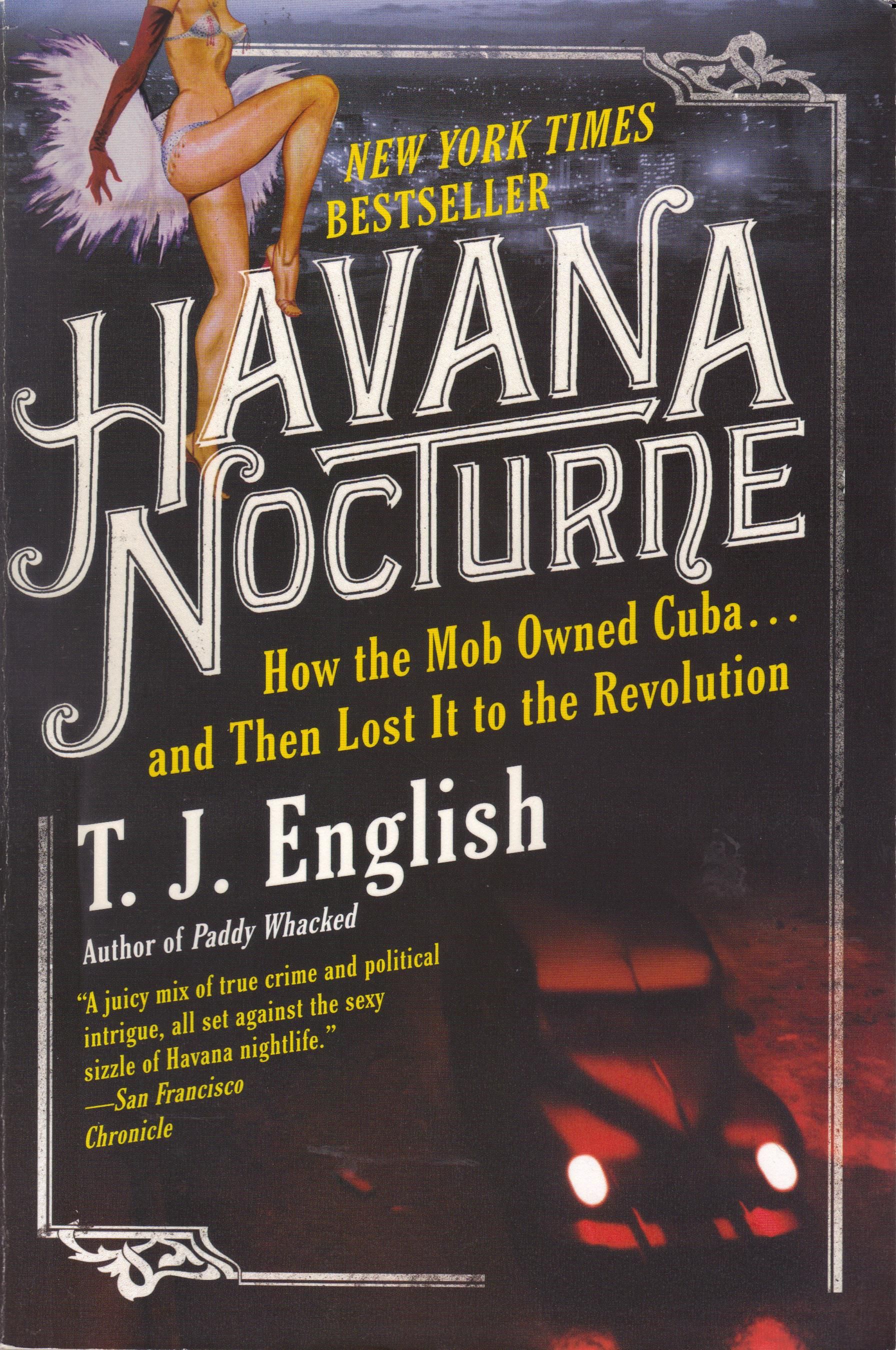Oxford comma in the title of this post: Yay or nay? I love Oxford commas, myself, but I enjoy hearing opinions about grammatical minutiae!
The Batman Chronicles volume 11 by Don Cameron (writer), Bill Finger (writer), Jack Schiff (writer), Alvin Schwartz (writer), Joe Greene (writer), Mort Weisinger (writer), Jack Burnley (artist), "Bob Kane" (artist), Dick Sprang (artist), Ray Burnley (inker), Jerry Robinson (inker), and George Roussos (inker). $14.99, 168 pgs, FC, DC.
I absolutely love The Batman Chronicles and I wish that DC would release them more often (the last one came out in December 2010). They're the only "Chronicles" I read, so I don't know how often the others come out, but I would think these are dirt cheap to produce as long as you have the actual artwork, because you don't have to pay anyone (well, maybe the heirs of Bob Kane, but still). That's neither here nor there, though - in terms of comics, I adore these volumes. Sure, the stories after the first few volumes are kind of goofy as DC decided to make Batman less of a Shadow rip-off and more of a superhero, but they're still absolutely fun to read. And yes, this volume sees the debut of Dick Sprang as Batman artist, and while I've learned to appreciate some artists I hated when I first started reading comics, I have never warmed to Sprang's work. But let's break these stories down! Collected within are Batman #20-21, Detective Comics 82-85, and World's Finest #12. They're cover dated December/January 1943/44 to March 1944.
First up is Batman #20, with four stories. "The Centuries of Crime" is about the Joker and two down-on-their-luck crooks swindling two people by pretending to send them a thousand years into the future and then a thousand years into the past. Batman and Robin, naturally, put the kibosh on that! What do we learn from this story? Bruce Wayne invested in a movie company that bought land on the "prairie" and built some sets, then went broke. The Joker used those very sets for his scam! The next story is "The Trial of Titus Keyes!" This is one of the best stories in the book, as Bill Finger sets it in a courtroom and flashes back to various events as witnesses tell what they know. It's structured quite nicely. What do we learn from this story? Batman is stone cold - he threatens to depressurize a diving bell with a crook inside, which would kill him. Dude! In "The Lawmen of the Sea," Batman and Robin hang out with the Harbor Patrol and fight pirates. What do we learn from this story? Batman has no sympathy for war widows - he scolds a woman who tried to commit suicide by telling her to suck it up and volunteer for the WAACs. Damn, Bats! Plus, Robin has a bed time. Finally, in "Bruce Wayne Loses the Guardianship of Dick Grayson," Bruce Wayne loses ... well, it's right in the title! Dick Grayson's uncle shows up and gains guardianship of Dick, but he has nefarious plans. Weirdly enough, it seems he really is Dick's uncle. Apparently he hasn't been seen in the DCU since. Man, that seems like a story opportunity waiting to happen! Could he be behind Leviathan? Or the Court of Owls?
In Detective #82, Batman and Robin fight a gang that uses football tactics to commit crimes. What do we learn from this story? Why, that Alfred was a super rugby player in his youth! In World's Finest #12, Alfred once again is in the middle of things, as he overhears some crooks talking and decides to make a citizen's arrest. That doesn't work too well for him. What do we learn from this story? Bruce Wayne is on food stamps! Well, okay, it's rationing for the war, but Alfred specifically calls them "food stamps." I knew that Bruce Wayne was really sponging off of my taxes instead of standing on his own two feet! Detective #83 has a story where owners of businesses rob themselves, and Batman and Robin must figure out what's going on! This is the famous (?) story in which Alfred disappears for a week and returns looking svelte - he must have lost over 100 pounds in that week, which can't be healthy.
Batman #21 also has four stories. "The Streamlined Rustlers" takes place in the "West," where Batman and Robin decide to head after they read about some cattle rustlers. Why they choose this particular crime to investigate is not really explained too well, but whatever. What do we learn from this story? "Loco weed" makes Batman say stuff like "Hee! Hee! Gun! Want gun! Make big noise! Bang! Bang!" In "The Blitzkrieg Bandits," a gang goes the football gang one better and uses military tactics to commit crimes! What do we learn from this story? Batman and Robin think so little of crooks that they don't search the lecture hall where the crooks probably went because they can't believe the crooks would stay there! The next story is "His Lordship's Double," in which Alfred impersonates an English lord ... who turns out to be impersonating the actual lord! What do we learn from this story? Alfred has a cousin named Theobald. That's a fine name, indeed! The Penguin returns in "The Three Eccentrics," in which he robs ... three eccentric people. What do we learn from this story? The Penguin doesn't know how to check dates on newspapers! In Detective #84, Batman and Robin stumble on a "university of crime" run by the vile Ivan Krafft, who seems ripe for a return to the pages of the comics, if you ask me. And in Detective #85, a killer pretending to be the Joker causes the real Joker to fight on the side of law and order! How does Bruce Wayne know it's not the real Joker? I quote: "It's not like the Joker to beat two men to death with a spade and clubs!" No, he just poisons them or shoots them. Really, Bruce?
Anyway, these are fun comics to read, and it's nice to get all the early Batman stories right in the order they were published - we hear about some of the famous ones, of course, but there's a lot of craziness in each issue. And, of course, this collection contains one of the best Batman panels EVER:
Rating: ★ ★ ★ ★ ★ ★ ★ ★ ☆ ☆
Harbinger volume 1: Omega Rising by Joshua Dysart (writer), Khari Evans (artist), Lewis LaRosa (artist), Matthew Clark (artist), Jim Muniz (artist), Matt Ryan (inker), Sean Parsons (inker), Ian Hannin (colorist), Moose Baumann (colorist), Jeromy Cox (colorist), Chris Sotomayor (colorist), Rob Steen (letterer), Josh Johns (assistant editor), Jody LeHeup (associate editor), and Warren Simons (executive editor). $9.99, 113 pgs, FC, Valiant.
I don't know if I really have a lot to write about this trade. It's a superhero book. Dysart, who can be a superb writer, settles into the superhero clichés pretty easily, and there's nothing really in the book that will surprise anyone, but it's entertaining enough, I guess. There's a kid named Peter Stanchek, who can read minds and influence minds (and a lot more, but he doesn't know that in the beginning of the comic), and he's on the run from a strange government organization, because of course he is. His best friend, Joe, is a paranoid schizophrenic, so neither of them are really all that well-adjusted. Meanwhile, in the book's prologue, we meet Harada Toyo, who apparently has the same abilities that Peter has. He runs a huge corporation, and very quickly we find out that he wants Peter to help him ... well, take over the world sounds sinister, and it appears Harada is much more benign than that. Let's just say he wants to save humanity from itself. Peter goes with him, but discovers that things aren't really as they seem. The whole set-up becomes Peter fighting against the Harada Conglomerate, but it's really "good" superheroes fighting against "bad" superheroes - Harada has found people with powers all over the world and trained them, and of course Peter is the most powerful but also the loosest cannon.
It's very standard Superhero 101, with Peter figuring out how to use his powers, dire predictions for his future, the other "superheroes" with easily digestible personality traits, and a horrific inciting event. Dysart does something interesting early on - Peter uses his power to make a girl he has a crush on fall in love with him, foreshadowing the fact that Peter is ridiculously powerful and can't be trusted to use his powers responsibly. Throughout the book, Peter is kind of a jerk, but it's tough to blame him - his life has sucked, after all, and he's dealing with a lot of crap. Other than that event, though, this is fairly paint-by-numbers, even down to Evans reining in his weirdest excesses in the art department. If you can't predict every single thing that happens after Peter uses his power to get the girl to fall in love with him, you've probably never read a superhero comic or watched any sort of genre fiction in your life. Dysart and Evans are both good creators, but this isn't terribly challenging at all. It's mildly entertaining, but that's about it.
I don't know - Valiant has a good opportunity to offer something different than DC or Marvel, and they don't seem to be embracing it too much. So far, I've read two of their initial trade paperback offerings, and they've been ... okay. Forgettable, but okay. I hope for something more. Oh well.
Rating: ★ ★ ★ ★ ★ ½ ☆ ☆ ☆ ☆
The Defenders volume 2 by Matt Fraction (writer), Terry Dodson (penciler), Jamie McKelvie (artist), Mike Norton (artist), Mirco Pierfederici (artist), Rachel Dodson (inker), Sonia Oback (colorist), Dommo Aymara (colorist), Jordie Bellaire (colorist), Veronica Gandini (colorist), Clayton Cowles (letterer), Joe Sabino (letterer), Jake Thomas (assistant editor), Jon Moison (assistant editor), Mark Panicca (editor), and Cory Levine (collection editor). $19.99, 120 pgs, FC, Marvel.
I wrote when this came out that I was a bit surprised it didn't catch on, and several people pointed out that it was, indeed, 4 bucks an issue, which makes it less surprising. Marvel foolishly tried to pry $3.99 out of people and then gave them 6 (!) pencilers in 12 (!!) issues, with each artist having a very different sensibility. Terry Dodson was absolutely the wrong artist for this kind of comic (and I like Dodson's art in general), and in this volume, Mirco Pierfederici's art was just lousy. In volume 1, Michael Lark's art on the relatively stand-alone issue #4 was very good, and Lark might have been a better fit for the book, while in volume 2, McKelvie's time travel story in issues #8-10 is very good. The artistic roundabout, the price point, and really, a somewhat hackneyed plot doomed this book, I would imagine. There was very little consistency to it, and while Fraction probably pared down his grand designs once he knew the book was getting cancelled, it still takes a weird veer in this volume from a possibly interesting idea about the Concordance Engines and Fraction's involvement with Iron Fist to something similar to what Dan Jurgens wrote in Thor a decade ago. And did a better job with, too.
Fraction's grand scheme is that somehow the Concordance Engines are keeping this Death Celestial from noticing Earth, but when the Defenders mess with it, the Celestial shows up and kills everyone. Meanwhile, he tries to explain why Earth is such a breeding ground for superheroes, but plenty of other writers in the Marvel U. have done that, so it's not that interesting. Readers just deal with it as best they can - they don't need convoluted explanations for it. The fact that the Defenders travel in time means there's a big neon sign glowing over everything explaining how they're going to fix the problem, so it's not that big a surprise when Doctor Strange does precisely that. I assume that Prester John will simply do to Nul what he did in the first volume and that will be that, but what happens when Hulk goes to "find someone else" to help him stop Nul? Won't that person also meddle, like the Defenders did? It's a bit of a cop-out, but I guess I shouldn't worry about it too much.
It's obvious that Fraction had a lot of things he wanted to get to and didn't because the book got canned. It makes The Defenders read like a disjointed and ramshackle comic, full of weird turns and intriguing ideas that don't pan out because there wasn't enough room. I have a feeling this book would have lasted longer if it had been a dollar cheaper and could get a consistent artist on it (it was released monthly, so there's really no excuse to have more artistic consistency). It wasn't, it didn't, so it got cancelled. Oh well.
Rating: ★ ★ ★ ★ ★ ★ ☆ ☆ ☆ ☆
Superman: Last Son of Krypton by Geoff Johns (writer), Richard Donner (writer), Adam Kubert (artist), Gary Frank (penciler), Jon Sibal (inker), Dave Stewart (colorist), Brad Anderson (colorist), Edgar Delgado (colorist), Hi-Fi (colorist), Rob Leigh (letterer), Steve Wands (letterer), Nachie Castro (associate editor), Matt Idelson (editor), and Rowena Yow (editor). $19.99, 250 pgs, FC, DC.
I have read very little of Geoff Johns's comics work, because whenever I pick up a random issue written by Geoff Johns, someone is getting decapitated or gutted or castrated in some gruesome manner, and it all seems very unpleasant. But I saw this at my comic book retailer and thought, "Sure, I'll give it a try. Why not?"
Well, I'm happy to report that no one gets decapitated, gutted, or castrated in this volume, which already makes it a pretty good Geoff Johns comic. I'm still not convinced he's a good writer, mind you, but keeping things relatively clean is a start. This is a bunch of pre-reboot Superman comics, that tell two complete stories but weren't published in consecutive order. What was happening in Action Comics while Kubert was catching up on the art? Very weird stuff. But we don't need to worry about that, because the stories are all here!
Neither of them are terribly excellent, although they're both good, solid superhero comics. Johns and Donner tap into the nerd nostalgia market with the first story, in which General Zod, Ursa, and Non escape from the Phantom Zone and devastate Metropolis - with the exception of the titular character, it feels very much like Superman II. They escape thanks to the "last son of Krypton," a boy who shows up in Metropolis with Superman-like powers who, it turns out, is closely connected to Zod and his minions. The second story, which is tangentially related to the first, features Brainiac, who goes around putting cities in bottles and then destroying the rest of their planets. This story is noteworthy because Superman manages to get Kandor away from Brainiac, and Jonathan Kent dies. Yes, it's sad but true.
The best reason to get the collection is the artwork, especially Kubert's. Kubert has always been a solid artist, but when he experiments, he usually does some very nice stuff, and "Last Son of Krypton" shows some nice changes in his regular pencil work. Early on, he does his standard pencil-and-ink work, and the book is notable only because Kubert has always liked big panels, so we get a bunch of those. Superman's fight against Bizarro in Chapter 2 has some good, expansive drawings - Kubert is good at those. When Zod and his cronies show up, Kubert starts to flex his artistic muscles a bit. Jor-El's explanation about the Phantom Zone is accompanied by drawings that appear colored directly from pencils, making them a bit less crisp than Kubert's other work but which highlights the fact that they're stuck in the Phantom Zone. Then Zod sends Superman to the Phantom Zone, and Kubert goes nuts with the 2-D aspects of the Zone, using rougher pencils combined with a muted palette (I don't know who colored this; DC only lists the colorists but doesn't break it down by issue) to show the alien landscape Superman is stuck in. When Superman finds a rocket that exists somehow "outside" of the Zone - meaning it's in the Zone but is solid and "3-D" - Kubert does a fine trick with the transition when Superman touches it - he becomes more "solid" and brighter. Kubert also makes the panels in the Zone much more fluid, as befits the weirdness of the Zone. The battle for Metropolis is well done, too - appropriately epic but still perfectly legible. Kubert gives us a two-page spread of Superman standing on a truck that is jammed into a skyscraper far above the ground, and it's an amazing portrait of someone who has both won and lost. Gary Frank and Jon Sibal aren't quite as inventive as Kubert is, but Frank is a very good penciler, so the Brainiac story, while it suffers creatively in comparison to "Last Son," is still very nice to look at. Honestly, the worst thing about it is that Frank tries to make Clark Kent and Lois Lane look like Christopher Reeve and Margot Kidder, and it's kind of freaky. And it does feel like the entire point of the story is so Johns can kill Jonathan Kent. That's the Geoff Johns I know and love!
This is a pretty good trade, and of course, it's interesting to read it with the knowledge that it was all swept away recently. C'est la vie, right? It's still entertaining!
Rating: ★ ★ ★ ★ ★ ★ ½ ☆ ☆ ☆
Wonder Woman volume 1: Blood by Brian Azzarello (writer), Cliff Chiang (artist), Tony Akins (artist), Dan Green (inker), Matthew Wilson (colorist), Jared K. Fletcher (letterer), Chris Conroy (associate editor), Matt Idelson (editor), and Peter Hamboussi (editor). $14.99, 125 pgs, FC, DC.
I thought Wonder Woman #1 was one of the better DCnU #1 issues, so I was curious to read this, because so many people have weighed in about the bizarre new origin story of the Amazons, which doesn't show up in this issue but which is foreshadowed a bit when Diana learns that she wasn't made out of clay but is instead the daughter of Zeus. I'm not the biggest fan of Brian Azzarello, but the intrigue of the first issue made me want to read this.
Like a lot of the other DCnU books that have been getting a lot of praise, I'm just not feeling this one. Maybe it's better reading it in single issues, but as a whole, it's 6 issues full of sound and fury, and it kind of bugs me. Maybe all of DC's books are like this - did editorial say "You want to write arcs that last 12-18 months? Go nuts!" This is an incomplete story, which is annoying enough, but even the stuff that is in here feels a bit hollow. For instance, Diana learns that she's not made out of clay in issue #3 (although Strife brings it up at the end of issue #2, but it's the cliffhanger, so the explanation is saved for issue #3). Then, in issue #4, her mother is turned to stone. Azzarello tries to make it emotional, but this Hippolyta doesn't feel like any Hippolyta I've ever seen before (and, granted, I haven't read a lot of Wonder Woman comics recently, so there's that), and Diana doesn't seem to have any emotional connection to her. Before she can reconcile with her mother (who lied to her so Hera wouldn't kill her, but Diana still gets all snooty with her), her mother's "dead." Now, this is comics, so Hippolyta might not be dead (for all I know, she might be alive again already), but this moment, which is supposed to be charged with emotion, doesn't do anything for me. Azzarello hasn't done any legwork to make me care about their relationship. This is a problem throughout the collection - the Amazons hate Diana, but their hatred feels forced. Azzarello uses the awful and tired trope of a man and a woman beating the shit out of each other before they suddenly decide to fuck like bunnies. I've said this before and I'll say it again - guys, try walking up to a woman and hitting her and see if she slugs you back and then fucks you or if she kicks you in the balls, attacks you with all her friends, calls the cops, or all three. Yeah, that's what I thought. It's such a cliché, and it makes me angry when I see it. And Hera pisses me off, too. She knows Zeus goes around, seducing women without using his actual form (or, presumably, telling them that he's a god and is technically married), and she tries to kill the women and the babies instead of, I don't know, cutting off his dick while he's sleeping? Jeebus, Hera. You're an idiot.
Chiang's art is good, as usual, and Akins is a fairly solid back-up to him, although in the final issue, there's some very confusing art that doesn't tell the story well at all. What does Diana do to Hera, for instance? Poseidon says that Diana blinded her, but is that metaphorical, because it doesn't look like Diana actually blinds her. What happened? Akins doesn't do a good job showing it, or perhaps Azzarello didn't do a good job expressing what he wanted to Akins. But there you go.
I'm a bit puzzled by the acclaim this got and is still getting. Everyone acts really stupidly, including Diana, and the only characters with any kind of spark are Strife and Lennox. There are people in this world who say that Diana has never had a personality until Azzarello got a hold of her. Those people, I would reckon, have read very few Wonder Woman comics. I don't know - this just doesn't work for me. It's the kind of thing that, as I was reading, I was mildly entertained, but the more I thought about it, the angrier I got. That's never a good sign!
Rating: ★ ★ ★ ★ ½ ☆ ☆ ☆ ☆ ☆
The One Trick Rip-Off + Deep Cuts by Paul Pope (writer/artist), Jamie Grant (colorist), Dominic Regan (colorist), Michael Neno (letterer), and Jared K. Fletcher (letterer). $29.99, 286 pgs, FC, Image.
This collection has a ton of Paul Pope stuff from 1993-2001, and if you're a fan of Pope, it's a very good book to own, and if you're not a fan of Pope ... well, you should probably start elsewhere. It's not that these stories are bad, it's just that he's done other stuff that's a lot better. This is a gorgeous collection - it's a nice hardcover with a good introduction by Charles Brownstein of the Comic Book Legal Defense Fund, and it's really nice to have all these stories between one cover.
The main story is "The One Trick Rip-Off," in which lovers Tubby and Vim plot to steal from Tubby's gang, the One Tricks. In the aftermath of Reservoir Dogs and Pulp Fiction, it's a very Tarantino-esque crime story, in which nothing goes right and people are always double-crossing everyone else. Pope shows some nice writing chops, as Vim is an unusual and eventually very strong character, while Tubby shows some nice fortitude as well. It's a fun story, although it doesn't really surprise anyone. Artistically, it might be the strongest piece in the book, even though later work is reprinted in the book. Perhaps Pope was able to settle in with these characters more, as it's the longest piece in the book by far, but he does some nice experimentation in the book - the One Tricks "one trick" is their ability to influence people with their minds, although it's not clear how powerful they are. Pope does a fine job showing visually how their ability affects people, and it gives the art a more frantic feel to it. The context of the art - a robbery with lots of action - helps, too, it seems.
That's certainly not to say that the artwork in the rest of the book is bad, because it's not. Pope does some experimentation with his style, some of which works more than others, and he gives us short stories based on poems (Rimbaud, for instance) or plays ("Antigone"), which go for a tone more than anything. Pope has always struck me as a tiny bit sentimental (there's nothing wrong with that; I'm sentimental myself), and so we get some beautiful little love vignettes, "Portrait of a Girl with an Unpronounceable Name," "Yes," "The Scarf," and "Airplanes." The second longest story in the collection, "Super Trouble," is something Pope did for Kodansha in 1994-95, which according to the introduction is being published for the first time here. It's a goofy story about teenage girls and an eating contest, but it's an interesting cartoony detour for Pope.
There's a lot to like about the evolution of Pope's art in the book. He tries different things with more frenetic lines in one story, more cartoonish aspects in another, more darkness in one, more interesting sounds effects in another. In "Antigone," Michael Neno is credited with the lettering, but I wonder if Pope did some of it - the actors speaking are lettered in a giant, bold, sweeping style that seems integrated into the artwork, while people speaking in the audience are lettered more "traditionally." Whoever did the lettering, it's a bold choice that fits well into the play.
If you've never read a Pope comic, you should probably check out Batman: Year 100 or 100%, which are both excellent (I haven't read THB or Heavy Liquid yet, because I suck). This is a good collection, but it might not convert you if you've never read his work before. This is more for people who are already fans and want to see some of Pope's minor curiosities. For that, it's a very nice collection.
Rating: ★ ★ ★ ★ ★ ★ ★ ½ ☆ ☆
Conan: Throne of Aquilonia by Roy Thomas (writer), Mike Hawthorne (penciler), Dan Panosian (artist), John Lucas (inker), Dan Jackson (colorist), Richard Starkings (letterer), Jimmy Betancourt (letterer), Brendan Wright (assistant editor), and Dave Marshall (editor). $19.99, 132 pgs, FC, Dark Horse.
The 12-issue "Road of Kings" arc finishes right where Brian Wood's new Conan series picks up, and Thomas gets us there in entertaining fashion, as our hero takes up with a small group of ragtag adventurers who are trying to overthrow the tyrant of Aquilonia. This means they have to fight giant bugs, zombies, and a giant lizard, but what are you going to do, right? After that, Conan finds one of his old comrades - who remarkably hasn't died yet, as Conan's friends tend to do - and they also get into trouble, although Thomas leaves a dangling plot thread for - maybe - Wood to pick up? It's all very adventurous, of course, and while I don't know if Hawthorne and Panosian are the perfect artists for Conan - Panosian is a bit rougher, but they're both a bit too cartoony for the blood 'n' guts of the comic, although they're both good artists, so it's not too big a complaint. I don't know what I can really say about the collection or the series in general - this arc wasn't quite as good as when Busiek and Truman were writing it, but Thomas does know the character well and gives us 12 issues of swashbuckling, which is sometimes just what you need. I've been enjoying Dark Horse's version of Conan since the beginning, and I'm sure I'll keep enjoying it for a good long while!
Rating: ★ ★ ★ ★ ★ ★ ☆ ☆ ☆ ☆
The Spider volume 1: Terror of the Zombie Queen! by David Liss (writer), Colton Worley (artist), and Simon Bowland (letterer). $19.99, 132 pgs, FC, Dynamite Entertainment.
I missed the first issue of The Spider when it showed up, so I decided to wait for the trade even though certain people in the comments section (you know who you are!) told me I should check this out. I like trades, man!
This is an odd comic in that it's not as good as the commenters made it out to be, but it's better than I expected before the first issue came out. I'm most disappointed in Worley's art, which is that photo-referenced, Photoshop-filtered stuff I really don't like, all darkened miserably by the constant rain in New York. But there's also Worley's really nice sense of design for many pages, as he uses red spider webs as border panels, which are not only distinctive but allow him to use a lot of curved borders, something that makes the storytelling more interesting. He designs the characters quite well, and there's a very good pulpy feel to the book, which I know both Liss and Worley are trying to achieve. So while I don't like the way he draws (or "draws," maybe) the book, I do like a good deal of the way he designs the book. It's annoying, frankly.
Liss doesn't do too much with the story - a woman wants to take over New York by turning everyone into pseudo-zombies - but as with most pulp tales, it's all how he tells it, and he gives is a decent, hard-boiled edge to it all. Liss does some nifty things with the characters - Richard Wentworth's great love, Nita, is now married to his best friend, so there's a romantic undercurrent which presumably will never be fully brought out into the open, because Richard's not that much of a dick. Meanwhile, the running gag in the book is that everyone suspects that Richard is the Spider, but only Nita and Ram Singh, his best friend, know that he is. So this leads to his nemesis, Joe Hilt (a police detective), to rant constantly about how Richard is the Spider but no one believes him. Liss does a good job adding humor (much of it dark, sure, but still) to this grim story. It helps make it a bit more interesting than it might otherwise be.
While I don't love The Spider, it's not bad. I can see Liss doing much more with the characters - the potential is there - and I don't know if Worley is coming back (he's not drawing the second arc, right?), but if he can make his art look less slick, it could be pretty keen. Obviously, if you're a fan of pulps, this is a pretty darned good comic. While I like pulp fiction, I'm not completely enamored by it, so I'll just say this was enjoyable but it could have been better.
Rating: ★ ★ ★ ★ ★ ½ ☆ ☆ ☆ ☆
Wolverine and the X-Men: Alpha and Omega by Brian Wood (writer), Roland Boschi (artist), Dan Brown (artist), Mark Brooks (artist), Andrew Currie (artist), Jay Leisten (artist), Norman Lee (artist), Ronda Pattison (artist), Walden Wong (artist), Andres Mossa (artist), Cam Smith (artist), Joe Sabino (letterer), Sebastian Griner (assistant editor), Jeanine Schaefer (editor), and Nick Lowe (editor). $19.99, 100 pgs, FC, Marvel.
I'm really not happy about the existence of this mini-series. Jason Aaron's Wolverine & the X-Men launched in late 2011 (issue #1 is cover dated December of that year), and this series was launched early in 2012 (issue #1 is cover dated March of that year). Are you kidding, Marvel? Two series at the same time about the same group of characters? Sigh. I just think it's dumb. But that's me.
Anyway, I read this series, and I kept waiting for a reason for it to exist. Quentin Quire hates Logan, so he creates a virtual reality inside his head and sends Logan and Armor there, where they have to fight to get out. Meanwhile, Quentin realizes he's lost control of the reality a bit, and he can't get them out. In the "real" world, Logan wakes up as pure id, knowing only that Quire fucked with him, so he starts stalking him. And there's a twist at the end. But there's nothing here that gives us a reason for this to exist, much less a 5-issue mini-series that costs $3.99 an issue. There's nothing big at stake, and we don't learn anything about the characters. Wait, Quentin Quire is a dastardly, conniving douchebag? You don't say! I guess Armor and Logan get to bond a bit, and Wood does give us a few nice character moments for Broo, Toad, Rachel Grey, and even Quentin, but that's not enough. On Page 4 of the series, Quentin says "Let's play a game," and that's all that this is. Now, I've often written that I don't mind if comics don't have high stakes, and this certainly doesn't, but that needs to be balanced by having some stakes or some good character development, and even though it's implied that Logan, Hisako, and Quentin might suffer if he can't figure it out, that never really comes through in the writing. This doesn't feel like it goes anywhere, and when we don't really learn anything about the characters either, that's not good.
I hate to compare today's decompressed comics to yesterday's compressed comics, but this is really the kind of story that Claremont might have knocked off in one or two issues back in the day, and that would have been fine. It might work as something in the middle of a series when it actually moves the character bonding forward and pays off down the line. That's been a staple of comics for years, where we get weird side trips like this that create a bigger tapestry of the shared universe. As a 5-issue mini-series, this doesn't work at all. It's too drawn out, it doesn't reveal anything about the characters, and the twist isn't a twist at all (and I doubt if Wood meant it to be one, but it reads like one). Boschi and Brooks (and I think Currie, who does issue #5, but the credits are lacking in this regard) do a decent job with the art, but it doesn't overcome a premise that doesn't warrant such expansion. Oh well.
Rating: ★ ★ ★ ★ ★ ☆ ☆ ☆ ☆ ☆
Eugenie and Napoleon III: A Dual Biography by David Duff. 308 pgs, William Morrow and Company, Inc., 1978.
There are many things in history that fascinate me, and Napoleon III's odd Second Empire is one of them. Louis Napoleon, who was officially the son of the first Napoleon's brother, Louis (and may have been Napoleon's bastard son), was raised by his mother, Hortense (herself Napoleon's step-daughter - she was Josephine's daughter from her first marriage) to believe fervently in the Napoleonic ideal of empire, and eventually, he found himself as the second (and last) emperor of France. His golden age didn't last long, but it was still interesting - he basically rebuilt Paris into what it is today - until it came crashing down when he poked the German bear in 1870, failing to see how much more powerful than France Bismarck and the Kaiser had become.
Duff tells the story of Napoleon and his wife, Eugenie, with intimate aplomb. I haven't read anything else by Duff, but apparently he wrote quite a lot about the personal lives of royalty, and it shows. He begins with Napoleon, who spent his youth trying to lead rebellions against Louis Philippe, the "Citizen King" of France. Napoleon was too callow, however, and he spent several years in prison in the 1840s. In 1848, however, the European revolutions swept Louis Philippe from the throne, and a year later, Louis Napoleon was elected president. In 1852 he was declared Emperor and took the title of Napoleon III - Napoleon's son, who never actually ruled, is considered the "Second." He then married Eugenie, a Spanish/Scottish beauty 18 years his junior. Duff does a good job balancing the two biographies well - Napoleon gets the spotlight early on, their courtship is done well, as are their years ruling France. Eugenie was a strong personality, and Napoleon apparently loved her deeply even though his fidelity to her did not last very long. Napoleon, it appears, was a sex addict, and Eugenie realized this early on. She outlived him by 50 years, so the final part of the book is about her in her long widowhood - Napoleon died in 1873, and their only son died in 1879 - and her efforts to find things to do. Eugenie seems like a very interesting person, and Duff writes passionately about her long friendship with Queen Victoria and other British royals - she spent a great deal of her later life in England.
Readers looking for a political history of the July Monarchy or the Second Republic or the Second Empire will be somewhat disappointed - Duff only sketches the details of the politics of the time, insofar as they inform our understanding of the marriage. He skims over Napoleon's term as president in a few pages, and he's more concerned about the time Bismarck spent as a guest of the family than how Bismarck fooled Napoleon into declaring war on Prussia. He does deal with Napoleon and Eugenie's relationship with Victoria and Albert quite a lot, as it was one of the most important friendship/rivalry in both couples' lives. That's okay, though - the book is called "A Dual Biography," after all, and we shouldn't expect anything extraneous, and Duff does a good job with certain events, like when Eugenie tried to hold the government together after Napoleon's capture at Sedan that effectively ended the Empire and her subsequent flight to England, which is quite gripping reading. The text of the book is only 285 pages long, however, and I wonder if Duff could have delved a bit more into some of the events, as the book occasionally skims the surface of some sections. I was fascinated by the brief story of Virginie Castiglione, an Italian spy who became Napoleon's mistress. She scandalized French society, which was pretty hard to do, as she appeared at a ball topless on one occasion. She appears in the book for less than three pages before she is sent home, and Duff never writes whether she had any influence over the Emperor or if she managed to gain any secrets from him. This is just one example - Duff was in his 60s when he wrote the book, and it's possible he was being a "proper English gentleman" by skimming over some of the more salacious details of Napoleon's life - obviously, he doesn't whitewash the truth about Napoleon's peccadilloes or even Eugenie's flirtations, but I kept getting the feeling that there was more than was on the page. It was a bit frustrating.
Eugenie and Napoleon III is a pretty good introduction to the two and to the world of 19th-century Europe, although it's far from the last word. In the 35 years since the book was published, I don't know if someone else has tackled this fascinating love story, but it wouldn't surprise me if someone had. It's too juicy a romance to leave alone!
Rating: ★ ★ ★ ★ ★ ★ ½ ☆ ☆ ☆
The Black Dahlia by James Ellroy. 325 pgs, Mysterious Books (Warner Books), 1987.
This is the first Ellroy book I've read, and it's a damned fine one. It's based on the real murder of Elizabeth Short, who was nicknamed "Black Dahlia," but it's not only a murder mystery, as Ellroy gives us a portrait of post-war Los Angeles, full of corrupt cops, gangsters, porn actresses, lesbians, boxers, rich real estate moguls, and all sorts of fascinating and perverse characters. The two main cops are Bucky Bleichert, who narrates the book, and his partner Lee Blanchard. They meet during the Zoot Suit Riots of 1943, and a few years later they box each other to raise money for a bond issue - both Bleichert and Blanchard were boxers in the later 1930s/early 1940s. Eventually, they're partnered together at Central Warrants, a big step up for Bleichert. But in January 1947 they happen to be roped into the investigation of the murder of Elizabeth Short, and things go really bad for both of them. Blanchard is living with a woman, Kay Lake, whom he rescued from an abusive boyfriend who is about to be paroled from prison. Bleichert is in love with Kay, but of course he doesn't say anything about it because he doesn't want to screw up his friendship with Blanchard or Kay. But Blanchard becomes obsessed with the murder, which drives Kay into Bleichert's arms. However, Bleichert has taken up with the daughter of a real estate mogul whom he met in a lesbian bar while investigating the murder and whose name he kept out of the evidence reports, so he's on the hook if someone finds out. It's all very noir, which of course is the point.
Ellroy does a really good job staying on point, even as the book stretches over two years after the murder and the case looks like it will remain unsolved. It's a very good mystery - everything is important and everything fits together very well, and it's one of those books that makes you want to re-read it immediately so you can spot all the clues you missed the first time. Because Bleichert is narrating, he misinterprets things or completely misses them, and it's fun to read along with him as he puts things together. It's a brutal book, too - of course, this is a time before police cared all that much about the rights of suspects, so the cops mistreat several people in the book, but it's more than that: the Short murder leads Bleichert and Blanchard into the porn industry, down to Mexico where Bleichert has to enter some very disturbing establishments, and into the hypocrisy of L.A.'s upper class. There's a lot going on in the book, and Ellroy impressively keeps it all focused. He also does a good job with the details of police work - the routine, the gathering of information, the different jobs Bleichert has in the department over the course of the book - which lends the book a "non-fiction" feel. It helps that it's based on an actual unsolved murder, but the way Ellroy takes us inside the L.A. police department, circa 1946-1949, makes it feel more "real." He brings in other real-life events, too - the Zoot Suit Riots, the partial destruction of the "Hollywoodland" sign - to add to that feeling. It doesn't hurt that it's gripping prose - his choice to use Bleichert as narrator is a good one, and Ellroy's tight, hard-edged prose keeps you on your toes as you read.
I guess the best thing about the book is that I now want to read more Ellroy. If you've never read anything by him, you could do a lot worse than starting here. It's a disturbing book, but very exciting and riveting. What more could you want?
Rating: ★ ★ ★ ★ ★ ★ ★ ★ ☆ ☆
Havana Nocturne: How the Mob Owned Cuba ... and Then Lost it to the Revolution by T. J. English. 396 pgs, HarperCollins, 2007.
English's book is exactly what the title promises - a survey of 1950s Havana, which was basically ruled by American gangsters, who made sweetheart deals with Cuba's dictator, Fulgencio Batista, and partied, gambled, drank, and screwed the night away while Fidel Castro gradually took over the country. It's a well-researched book, but it's definitely popular history - it's a quick read, full of interesting characters and exciting times, and while English does get into the causes of Castro's revolution quite often, he still skims the surface. There was a lot going on in 1950s Cuba, after all, and he can't cover everything!
The main protagonist of the book is Meyer Lansky, who dreamed of creating a Mob-run state in a place where the U.S. laws couldn't touch him. For years he had believed Cuba was that spot, and he cultivated a friendship with Batista even in the 1930s, when the dictator ruled Cuba the first time (he was president for a while, then the power behind the throne, but then he went into retirement in the mid-1940s before staging a coup in 1952). The war put Lansky's plans on hold for a time, but in 1946, he convened a meeting in Havana among the major Mafia leaders in the U.S., and from that meeting came a plan to turn Havana into a new Monte Carlo or Las Vegas. When Batista returned to power in 1952, he cozied up to the mobsters and allowed them free rein in the city, and for a time, Havana was the place to be. Of course, Batista was a dictator, so he cracked down on dissent, allowed his family to plunder the commoners for millions, and ignored the rumblings of revolution. His biggest mistake was allowing a young Castro to live when he had him in his power, but he made plenty of others, too. In the second half of the book, English cuts back and forth from the fantasy world of the casinos to the jungles of eastern Cuba, as Castro's army gains strength while the crime bosses and the dictator pretend nothing is wrong. Lansky is always there, however - English shows that he was one of the most cautious gangsters in history, never flying off the handle in a rage, always looking to remain in the background while others basked in the spotlight. Even Lansky couldn't see what would happen when Castro took over - he knew Batista was heading for a fall, but he believed that Castro would keep the casinos open because the loss of money to the Cuban economy would be too devastating. He underestimated the hatred the Cubans had for the gangsters, whom they saw as being as complicit as Batista in the corruption of their government.
It really was an audacious plan that Lansky and the other gangsters had, and there's an odd sense of nostalgia for the brief time when they ruled the city. I doubt if English really believes that the Mafia was good for Cuba, but the glamour of the 1950s is undeniable, and even English's comprehensive look at the seediness of it - live sex shows were a staple of Havana night life, for instance, and the Mafia once threw a fancy orgy for one Senator John F. Kennedy in a casino hotel suite - can't completely dull the patina of extravagance. The gangster kingdom only really lasted a few years - from about 1955-56 through the end of 1958, as Castro took over on 1 January 1959 - but English does a good job going over how astonishing it really was. Of course, he writes about several other Mafia-related events over the course of those years, tying them into Lansky's dream and how long it took to get off the ground. In the early 1950s, Lansky and others had to deal with the Kefauver Committee, Senator Estes Kafauver's rambling road show that dragged many prominent gangsters, including Lansky, into public view for the first time. In 1957, Albert Anastasia, one of the most ruthless gangsters in American history, was gunned down in New York, probably because he was grumbling about his share of the ownership of a Havana casino. Lansky's main rival in Cuba was Tampa mobster Santo Trafficante, who was much more of a stereotypical tough guy than Lansky but who was locked in a symbiotic relationship with the Jewish gangster. Still, English points out, these men were desperate to be "legitimate," and if they couldn't achieve that in the States, they would try to achieve it in Cuba.
English doesn't delve too far into the greater socio-economic factors that contributed to Batista's downfall and Castro's rise. This is a very personalized history book, with the characters of Lansky, Batista, Casto, Trafficante, and others dominating the narrative. That's not the worst way to write the book - despite many societal factors, English implies that if Batista had killed Castro when he had the chance, he might not have survived, but the Gangster's Paradise might have. Castro's singular vision for Cuba - a Marxist one, that is - was antithetical to the Mafia's ideal, and if Castro hadn't been around, they might have weathered the storm. Their magical kingdom, however, was a casualty of the Revolution.
English certainly doesn't sugarcoat the sins of Lansky and the others, but he can't suppress the glamour of the Riviera's opening night or the allure of the Cuban music scene. One thing he does imply is that Lansky and the others helped inspire many Cuban musicians, who took American jazz and added a Caribbean/Latin flare to form a new hybrid, and that was the soundtrack of the Havana Mob Kingdom. The Mafia built these palaces, and they were smart enough to know that mambo, salsa, and other sensual dances and music brought in the crowds, so they encouraged it. Cuban jazz would have probably blossomed anyway, but the link between Havana and the American jazz capitals made it easier for musicians to create, and the casinos provided them with the perfect venue.
Havana Nocturne is a fascinating book, even if it's not as deep as it could have been. There's a strange "what-might-have-been" quality to it that feels at odds with the fact that Havana was built by gangster who thought nothing of killing business rivals, but it's there nevertheless. If you ignored the way it was built, Havana in the 1950s sounds like an intriguing place to visit. English brings it alive nicely.
Rating: ★ ★ ★ ★ ★ ★ ★ ½ ☆ ☆
Well, that's it for this month. Phew! Next time around: more comics, more books, and some music! Whoo-hoo!

